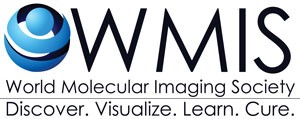Infectious diseases are a major threat to human health. The alarming rise of highly virulent and multi-drug resistant pathogens, their rapid spread leading to frequent global pandemics, and continued life-threatening nosocomial infections in hospitals, are major challenges to health care in the U.S. and worldwide. Molecular imaging enables several advantages over traditional tools used for the study of infectious diseases. This session, organized by the Imaging of Infection (IOI) interest group, will provide information on the use of molecular imaging to provide novel insights into disease pathogenesis, as well as the translation of molecular imaging tools to the clinic.
Imaging the Host, Pathogen and the Microbiome Overview and highlights
Sanjay Jain, Director, Center for Infection and Inflammation Imaging Research, Associate Professor of Pediatrics & International Health, Department of Pediatrics & Center for TB Research, Johns Hopkins University, Baltimore, MD, USA
This presentation will discuss new host imaging techniques for infections and new pathogen-specific imaging tracers for infection as well as providing examples of how molecular imaging can provide novel insights into disease pathogenesis, that may not be possible with conventional methods
ImmunoPET/CT reveals the secret life of viruses and their targets in vivo
Francois Villinger, University of Louisiana, Lafayette, LA, New Iberia Research Center, Wallace H. Coulter, Department of Biomedical Engineering at Georgia Tech and Emory University, Atlanta, GA, USA
Immuno-PET/CT uses antibodies as ligand against target receptor coupled with positron emitting radionuclides. CT gives vital anatomical information. The biological benefits of using antibodies include adequate circulation, penetration of tissue, and specificity and uptake.
Imaging Immune Cell Dynamics in the Living Brain
Dorian McGavern, Chief of the Viral Immunology and Intravital Imaging Section, National Institute of Neurological Disorders and Stroke (NINDS), Bethesda, MD, USA
Imaging the immune response to the pathogen using an optical imaging approach and teach in a particular disease model how we have learned about pathogenesis by using this type of an approach and how it can really teach us about how diseases work in living systems, focusing in the brain.
ImmunoPET for Specific Detection of Pathogens – Yersinia enterocolitica
Stefan Wiehr, Werner Siemens Imaging Center, Department of Preclinical Imaging and Radiopharmacy, Eberhard Karls University, Tübingen, Germany
This talk will discuss development of a specific radiotracer for the detection of Yersinia enterocolitica infection. Polyclonal antibody YadA specifically binds to Yersinia enterocolitica and is an ideal candidate and can serve as a prototype for immunoPET targeting bacterial infections. Comparisons to other radiotracers will be presented.
PET Probes for Targeting Immune Cells in TB Granulomas
Carolyn Anderson, University of Pittsburgh, Pittsburgh, PA, USA
This presentation discusses the development of PET probes designed to instead of targeting the bugs we are going to specifically target the immune cells in tuberculosis granuloma. Disease reactivation and predicting drug response in individual granulomas will be addressed.
